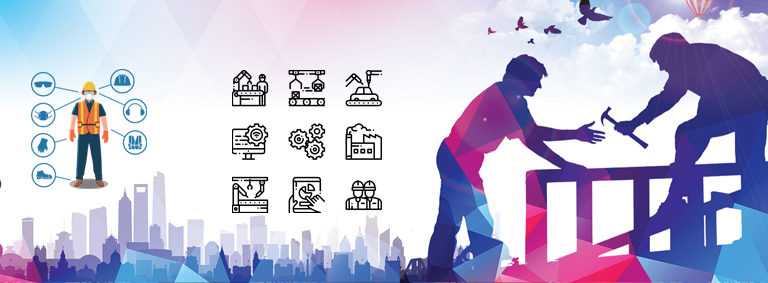India recently celebrated its 73rd Independence Day and during Independence Day address to the nation, Prime Minister Mr Narendra Modi highlighted his vision of doubling the size of the Indian economy to $5 trillion in the next five years. He also spoke about how ‘Make in India’ and its current improvement in Ease of Doing Business index would help the nation in achieving the economy goal. All the pronouncements point to good prospects for starting a new business or expanding the existing ones.
As new industries develop, existing industries expand, and new technology is introduced, the environment is increasingly placed at risk and hazards to human health arise. It is estimated by the International Labour Organization (ILO) that 2.3 million work-related deaths occur each year all over the world. In addition, a large number of workers are victims of work-related accidents and illnesses. Modern manufacturing units are required to strike a perfect balance between operational efficiency and employee safety.
All workplace accidents are preventable. Accident statistics demonstrate that slips, trips, falls, falling objects, unintentional contact with sharp or hot objects, hazardous chemicals, moving vehicles and machinery are the most common hazards in all industries or activities. Hence, it is essential to provide safe work environment and good working conditions for all. In a safe and healthy work conditions, employees feel motivated to work, there is improvement in productivity, zero injuries and it builds good brand image too.
But safety and health are still a neglected issue and many challenges yet to overcome. In an automobile ecosystem consisting of Original Equipment Manufacturers (OEM), Tier 1, Tier 2 and other suppliers’ network, the farther we go from OEM, the lesser is the Safety and Health mindset. Safety controls are often overlooked for cheaper cost of manufacturing. Business performance is not measured with respect to Health and Safety. This was the case a few years back. However, now many company owners are taking interest in improving safety standards and providing safe, healthy & clean working conditions for their employees. But still there is a long way to go.
The top leadership must focus on safety activities like setting clear safety policy, goals and targets; Making safety organization with clear roles and responsibilities; Providing resources in terms of money, people and technology; Periodic reviewing of safety performance; Rewards and recognition to associates in safety activities like Kaizens, Safety Circles, Safety skits and Spot the hazard.
(The author is Member, FICCI Taskforce on Manufacturing Excellence and Group Vice President & Director, Manufacturing, Honda Motorcycle & Scooter India)





